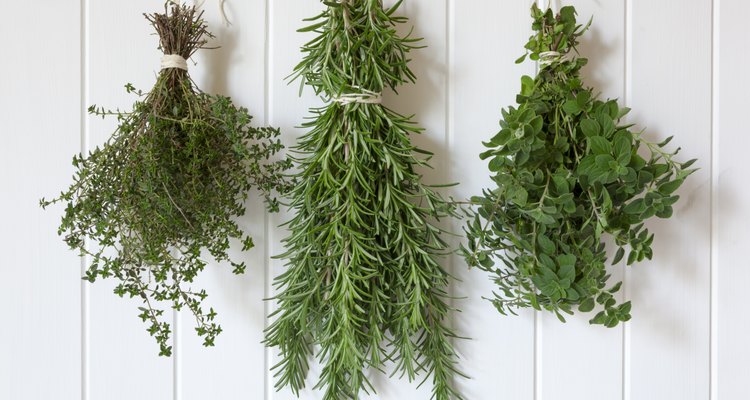
robynmac/iStock/Getty Images
Herbs add wonderful flavors to soups, stews, salads and many other dishes. Parsley, cilantro, dill and basil are typical fresh herbs that are found in the aisles of most grocery stores, but many herbs are more available in their dried forms, such as sage, lavender and oregano. Many are widely available in fresh and dried versions.
Why Fresh Not Always Best
For many foods, fresh is best. But when it comes to herbs, the drying process creates a different flavor in the herb and produces a different quality in your food. In certain dishes, fresh herbs may provide a specific flavor that you can't achieve with dried herbs and vice versa. Middle Eastern cooking commonly uses fresh versions of herbs such as cilantro, parsley, ginger, and mint, while Indian cooking often uses dried herbs ground together to make a "masala."
Equal Substititutes
For most home chefs, the difference in taste between fresh and dried herbs is not significant enough to necessitate one over the other. Ochef, a leading cooking web site, explains that ground, dried herbs can take the place of fresh as long as you keep tasting your dish and adjust seasonings as necessary to get the right flavor. Fresh herbs are not always available and don't last long, while dried herbs are easier to find and store, and are therefore more useful to home cooks.
How Much to Substitute?
Some purists don't recommend substitution amounts because of the difference in flavor and tell you to let your taste buds be your guide. Most experts, however, acknowledge that dried herbs are more potent due to their high concentrations and recommend lower quantities of dried herbs for higher quantities of fresh herbs. Martha Stewart counsels that the proper ratio of fresh to dry is 3 to 1, so 3 tbsp. of fresh herbs would be substituted by 1 tbsp. of dried herbs.
How to Use in Cooking
Even when they are substitutable, fresh and dried herbs may not be used the same way in cooking. Dried herbs have a stronger flavor, which can be used to enhance dishes as they are cooking, and can therefore be added successfully to raw or partially cooked foods. Fresh herbs, however, are more delicate, and high heats or long cooking times can subdue their flavors. To maximize the flavor of fresh herbs, the American Dietetic Association recommends to chop them finely and add them toward the end of your cooking.
Related Articles
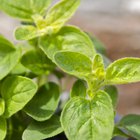
How to Eat Fresh Oregano Leaves

What to Use in Place of Italian ...

About Fresh Ginger Substitutes

How to Substitute Dried for Fresh Dill ...
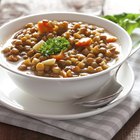
What Do I Put in With Lentils to Cook?
Seasoning to Use in Place of Beau Monde

Does Dry Chili Ever Expire?

How to Rehydrate Dried Herbs

Galangal Powder Substitute

Mouthwash Recipes for Dry Mouth

Difference Between Peppermint Extract & ...

Do Seasoning Blends Go Bad?
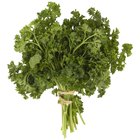
How to Replace Fresh Parsley With Dried

How Much Turmeric Powder Is in Curry?

How to Use Essential Oils Instead of ...
What Is the Cooking Substitution for ...

How to Freeze Thyme in a Bag

What Is the Difference Between Salt ...
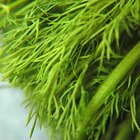
Classic Russian Spices

What Herbs Go With Veal Chops?
References
Writer Bio
Jordan Saibil began writing professionally in 2010. He pursued a medical degree at Columbia University's College of Physicians and Surgeons as well as a law degree at the Cardozo School of Law. He holds a Bachelor of Science with honors in psychology from McGill University and a health sciences degree from Marianopolis College.
Photo Credits
robynmac/iStock/Getty Images